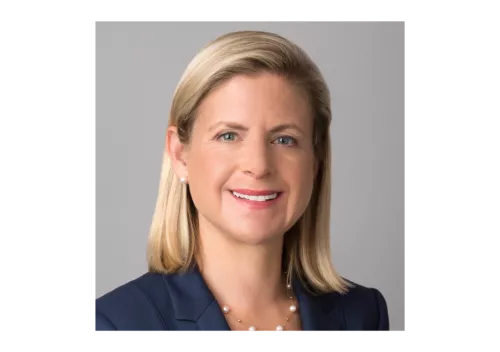Public disclosure of clawback policies among Fortune 100 companies on the rise.
Even as many small to medium-sized companies adopt a ‘wait and see’ approach to the SEC’s pending clawback regulations, the number of high-profile Fortune 100 companies disclosing and adopting new policies on their own continues to grow.
The policies, which allow companies under certain circumstances to recover or ‘claw back’ compensation they have already doled out to employees, are all over the map, industry experts say. Some are triggered when former employees violate non-compete clauses, others go into effect when fraud is committed, and others might be triggered by any financial restatement.
Few, however, go as far as those expected to be enacted when the SEC issues its new clawback regulations as mandated under the Dodd-Frank law. Most experts believe those rules will force the vast majority of companies to modify their policies. (Companies have been expecting the new rules for more than a year, and at the time of going to press they had still not been released.)
‘Many companies have put their foot in the water’ regarding clawbacks, says Jeff Hyman, a senior compensation consultant at Exequity. ‘There’s a tremendous range, but there are very few – I could not even cite one – that have implemented a clawback policy as severe as the Dodd-Frank legislation mandates.’
Push for policies growing
Even so, some experts suggest the new policies that have already been put in place are perhaps the first step in a coalescing consensus around the issue. While the impending and previous SEC rules have certainly played a role in growing the number of clawback policies, another powerful factor has been the increased scrutiny of executive compensation policies by activist investors, regulators and the media.
Proxy advisory firms like ISS and Glass Lewis have made it clear that they favor some form of clawback and that they take such policies into account when assessing executive compensation, and some unions and other activists have vocally lobbied for strict clawback polices.
As a result, the clawbacks already on the books may eventually filter down to small and mid-cap companies even without congressional action.
‘We see far more clawbacks for the larger companies than mid-market companies because big companies are in the spotlight,’ says Jim Barrall, a partner at Latham & Watkins specializing in compensation issues. ‘Many changes in pay policy start at the top and work their way down to the mid-market. That is the way it has always been.’
Clawbacks in today’s environment, notes Hyman, have ‘an important public relations angle. I think that making the public statement that you are willing to go back and take back ill-earned gains is an investor-friendly action.’
Even with SEC action pending, Hyman continues, ‘I generally advise boards to put something in, though what form varies widely by industry and company. The advantages outweigh the shortcomings because of the public relations aspects. There’s always an opportunity to modify in the future.’
Clawback policies among Fortune 100 companies were already on the rise before the financial crisis, jumping from 17.6 percent in 2006 to 42.1 percent in 2007, according to recent analysis released by executive compensation data provider Equilar. In 2010, the year Dodd-Frank was passed, 82.1 percent of the Fortune 100 had them. In 2012, 86.5 percent of Fortune 100 firms had adopted publicly disclosed policies.
The most popular form of clawback policy found by Equilar allows companies to claw back compensation when there is a financial restatement and ethical misconduct – some 49 percent of the companies surveyed had that policy in place. About 12.5 percent included provisions for financial restatement, ethical misconduct and non-compete violations. About 10.4 percent allowed for financial restatement only, 3.1 percent for ethical misconduct only, and 1 percent for non-compete only.
Making policies effective
Writing a policy is different to implementing it, however, and so far very few of these companies have actually used their clawback provisions to recover any compensation. In July, JPMorgan reported that it would be restating interim financial statements made for the first quarter of 2012, reducing the firm’s net income by $459 million due to the massive multi-billion-dollar losses incurred from a complex series of trades that was first disclosed in May.
The company announced that it planned to claw back millions of dollars from London-based managers with ‘direct responsibility’ over the portfolio that caused the losses. It did not disclose specific numbers, but said they represented the ‘maximum permitted clawbacks’ under its policy and amounted to about two years of total annual compensation, including restricted stock and cancelled stock option grants. The three traders targeted – and their superior, who voluntarily returned compensation – also received no severance pay and no 2012 incentive compensation. CEO Jamie Dimon has said JPMorgan’s clawback policy targets senior employees and can be invoked for ‘bad judgment’ based on language that has been inserted into the employment contracts of the bankers.
Despite the headlines generated by its actions, JPMorgan was only the second US company to actually recoup compensation from its executives, according to the Equilar report. The first was AIG in 2009.
That will likely change once the SEC’s Dodd-Frank regulations are implemented. They are expected to enshrine financial restatements as a trigger, and would remove board discretion, requiring that the policies be put into effect if the company wants to continue to stay listed on public exchanges. Some of the provisions have sparked widespread handwringing among some corporate boards and led to debate about what impact they might ultimately have.
The Dodd-Frank standard
Clawbacks have been on the regulatory radar screen in a big way since 2002, when the Sarbanes-Oxley Act gave the SEC the power to recover compensation and stock profits from CEOs and CFOs of public companies in the event of financial restatements caused by misconduct. The SEC has grown increasingly aggressive in using the tool in recent years, seeking to recover compensation from executives who were not personally charged with misconduct – an approach validated by a federal court in June 2010, according to a report issued to clients by Latham & Watkins. (In the 30 months leading up to March 2010, the SEC obtained reimbursement from 14 officers in 11 cases, according to the report.)
The Dodd-Frank provisions go a lot further, however. Rather than empowering the SEC to take action, they require that the publicly listed companies themselves recover the compensation.
The policies will be applied not just to CEOs and CFOs but to ‘any current and former executive officer’ who received incentive-based compensation based on faulty data during the three-year period preceding the date on which the issuer is required to prepare a restatement. Sarbanes-Oxley rules apply only to the year following the financial restatement.
The fact that even executives who are not at fault will have to return compensation is among the most contentious parts of the new policy.
In a July 31 speech to the Society of Corporate Secretaries and Governance Professionals (SCSGP), SEC commissioner TroyParedes told the audience: ‘I have been and remain troubled that the Dodd-Frank regulatory regime goes too far.’
Singling out the clawback proposal, he noted that ‘an executive who has worked diligently and honestly at a company that has robust financial controls and top-notch procedures and systems may nonetheless have to pay back a considerable portion of his or her compensation if the company has to restate because of an accounting error. I can understand why many might find this troubling.’
Some corporate leaders have called the policy ‘draconian’, but corporate governance experts and shareholder advocates are not about to back down.
‘If executives are rewarded for ‘hitting their numbers’ and it turns out that they failed to do so, they should not profit,’ Gregory Smith, chief operating officer and general counsel of the Colorado Public Employees’ Retirement Association, told the House Financial Services Subcommittee on Oversight and Investigation earlier this year. ‘It is unfair to shareholders for corporations to allow executives to retain compensation that they were awarded erroneously.’
Paul Hodgson, senior research associate for executive and director compensation at the Corporate Library, says he and his firm have told clients that the ‘gold standard’ is a performance-based clawback that doesn’t require complicity.
‘It is common sense,’ he explains. ‘If you want executives to behave like shareholders, they have to suffer the ups and downs along with the shareholders. Investments clearly decline when there is a restatement. It’s the fairest policy from every point of view – but common sense doesn’t operate very effectively in executive compensation circles.’
Accentuate the positive
In addition, Hodgson notes, there is some evidence that this kind of policy can have a positive impact on company performance. Firms that voluntarily adopted a compensation clawback provision between 2007 and 2009 had significant improvements in both actual and perceived financial reporting, according to a recent paper prepared by Ed deHaan, Frank Hodge and Terry Shevlin of the University of Washington Michael G. Foster School of Business, entitled ‘Does voluntary adoption of a clawback provision improve financial reporting quality?’.
The study also finds that clawback provisions which apply to restatements caused by either intentional or unintentional errors have an incrementally larger impact on financial reporting quality and compensation than do clawback provisions that apply only to restatements involving fraud.
‘Academic research has shown a positive relation between stock-based compensation and accounting restatements, and the cost of restatements to shareholder wealth has been documented in the billions,’ the authors write. ‘Given that restatements are significant economic events with well-documented negative consequences, and that there appears to be a link between restatements and executive compensation, firms face a strong incentive to structure executive compensation contracts to reduce the risk of a misstatement.’
While stock-based and performance-based compensation have been a key demand of activist shareholders seeking more executive accountability, however, the study authors add that ‘such compensation also encourages managers to manipulate accounting information in order to maximize their pay.’
Paredes has also warned that the law could create unwelcome consequences. ‘Might compensation arrangements be restructured so that executives end up receiving less incentive pay that could be clawed back, but larger discretionary bonuses that are not explicitly linked to specific financial targets?’ he asked the SCSGP. ‘Might issuers be discouraged from restating to avoid triggering the Section 954 clawback? The unintended consequences could be costly.’
These comments have been widely reported, but compensation consultants like Hyman dismiss such concerns mainly because they only kick in when something goes wrong.
‘When something bad happens, and hopefully it is not too often, quite honestly boards today don’t feel bad about putting clawbacks in,’ he says. ‘They kind of like it – they think it is the right thing to do. I think boards are going to struggle to approve vastly different compensation construction that is clearly designed to circumvent clawback rules. Boards aren’t having a problem with this; they think this is something they should have in place.’
Calculation confusion
Still, scores of unanswered questions remain. Among the biggest is how companies will retroactively calculate a new value for incentive-based stock options impacted by a wide range of factors that likely goes well beyond any changes in perceived value of company stock caused by the financial restatements. How, for instance, does one separate larger economic factors from the mix? Without being able to separate out those factors, how will a company know how much to claw back?
In addition, many companies determine executive compensation using a ‘scorecard’ approach that is dependent on a wide variety of factors, some of which can be less financial and ‘more qualitative in nature’, says Barbara Mirza, a compensation expert at Skadden Arps Slate Meagher & Flom.
‘If you paid out based on a whole variety of factors, who is to say what the difference would be?’ she asks.
Perhaps the most controversial measure, however, is the language that appears to take away any board discretion which might give the board wiggle room not to pursue virtually every clawback policy currently on the books.
‘If the clawback is small, but the cost to recoup is high, boards might not bother,’ Mirza continues. ‘But it appears that in the new rules, there will be no discretion. Many companies would probably feel that the idea of taking away the discretion of boards of directors to pursue or not pursue a claim, given an amount that is small and even if executives haven’t done anything wrong, is troubling.’
The vast majority of clawback policies in place today, Hyman notes, provide the company with the opportunity and discretion to forgo the clawbacks if they deem it appropriate.
In the end, the best solution may be to include language pointing to the forthcoming regulations in any clawback policy. Barrall suggests that companies insert language in compensation plans which states that any grants or bonuses are subject to clawbacks that ‘may be required by any law or regulation’.
Though many of the companies surveyed by Equilar were waiting for SEC guidance to modify their clawback policies, a small number have already added language similar to this. Express Scripts Holdings noted in its April 2012 filing that ‘Once final rules are released regarding clawback requirements under [Dodd-Frank], we intend to review our policies and plans and, if necessary, amend them to comply with the new mandates.’
Coca-Cola revealed in March that as of February 16, 2011, many of its incentive plans have been ‘amended to include a clawback provision with respect to the recapture of awards as may be required by the provisions of [Dodd-Frank] or any other law or the listing standards of the NYSE.’
Fortune 100 companies with publicly disclosed clawback policies, 2006-2012
2006 17.6%
2007 42.1%
2008 64.2%
2009 72.9%
2010 82.1%
2011 84.2%
2012 86.5%
Source: Equilar, ‘2012 clawback policy report’








